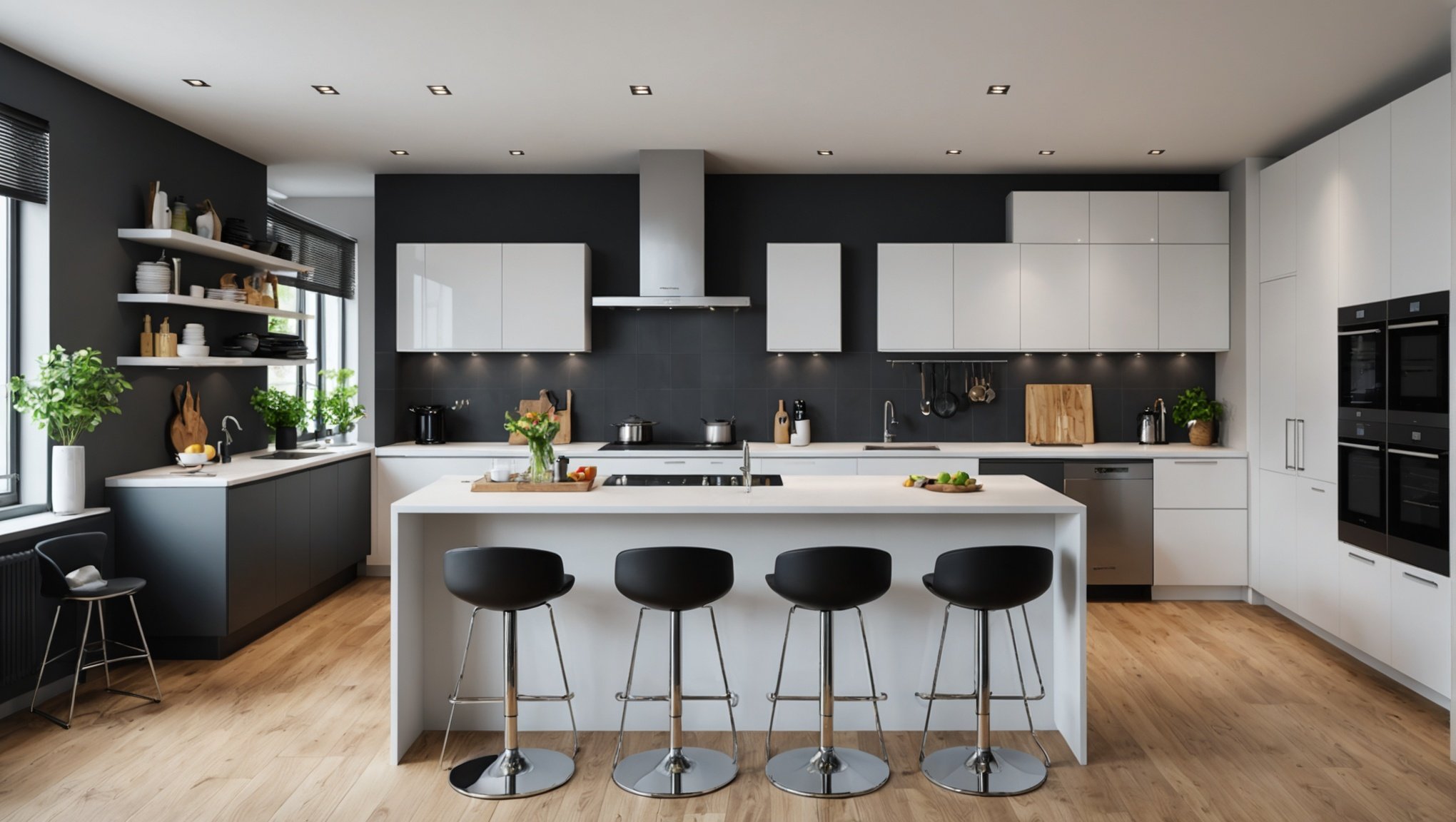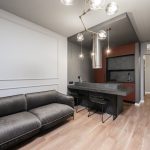The open-plan kitchen has become a popular choice in many modern homes due to the seamless integration it offers with the rest of the living space. However, this lack of barriers also brings with it the inevitable problem of noise pollution. Loud conversations, the buzzing of appliances, and the clatter of cutlery can easily reverberate around the room, disturbing other activities in the house. This article will provide some effective ways to reduce noise in an open-plan kitchen, providing an acoustic remedy to the cacophony of cooking spaces.
Soundproofing the Walls
The walls of your open-plan kitchen are the first line of defense against noise. Sound can easily bounce off hard surfaces, amplifying its impact. To mitigate this, using soundproofing materials that absorb or block sound waves can be extremely beneficial.
Additional reading : What are the best types of sinks for a hardworking UK kitchen?
Consider adding an extra layer of soundproofing material to your existing walls. This can be anything from a dense foam board to specially designed acoustic panels. These materials have the ability to absorb sound waves, preventing them from bouncing back into the room.
If you’re willing to undertake a more significant renovation, installing double walls can be an effective way to reduce noise transmission. This involves constructing a second wall in front of the existing one, with a gap in between filled with a sound-absorbing material. This not only blocks sound from penetrating the wall but also absorbs any noise that does manage to get through.
Also to read : What are some budget-friendly ways to update your kitchen?
Windows and Doors: The Weak Links
Windows and doors often prove to be the weak links when it comes to soundproofing a room. Their thin construction and gaps allow sound to easily pass through. However, there are several actions you can take to make them more soundproof.
Replacing your existing windows with double-glazed ones can drastically reduce the amount of noise entering and leaving the room. The two layers of glass, separated by a layer of air or gas, act as an effective barrier against sound transmission.
If replacing your windows isn’t an option, window inserts can be a cost-effective alternative. These are additional panes of glass or acrylic that can be fitted onto the interior of your existing windows, providing an extra layer of protection against noise.
Doors can also be upgraded to be more soundproof. Solid core doors, which are denser and heavier than their hollow counterparts, are particularly effective at blocking noise.
Soundproofing the Ceiling and Floor
The ceiling and floor of your open-plan kitchen can also act as conduits for noise, particularly in multi-storey buildings. Fortunately, there are various ways to soundproof these surfaces to create a quieter environment.
Acoustic ceiling tiles or panels are an effective way to reduce noise bouncing off the ceiling. They work by absorbing sound waves, preventing them from being reflected back into the room.
For the floor, carpets and rugs can be a simple and cost-effective solution. They absorb sound and also help to dampen the noise created by footfall. If you’re looking for a more comprehensive solution, consider installing a layer of soundproofing underlay beneath your floor covering.
Using Furniture and Space Planning
Furniture arrangement and space planning can also play a key role in noise reduction. Soft furnishings such as sofas, curtains, and cushions can absorb a significant amount of sound, helping to dampen the noise within the room.
Try to create a layout that places noisier appliances and activities further away from the common areas. For instance, if you have an office adjacent to your open-plan kitchen, locate your dishwasher or refrigerator on the opposite side of the room.
You can also use furniture to create natural barriers within the room. For example, a high-backed sofa or a bookshelf can help to block sound from spreading to the rest of the house.
The open-plan kitchen can be a bustling hub of activity in the home, and while the noise can be a sign of life and vitality, it can also pose an issue when peace and quiet are required. With the right soundproofing materials, careful planning, and strategic use of furniture, you can effectively reduce noise and create a more serene environment.
Incorporating Acoustic Design
Acoustic design is another significant element to consider when you aim at enhancing sound isolation in your open-plan kitchen. This involves the strategic placement of surfaces and materials to control how sound behaves in your space.
Understanding the basics of acoustic design can be very helpful in achieving an ideal noise reduction within your open-plan kitchen. For example, smooth and hard surfaces reflect sound waves and can cause an echo effect, while soft and rough surfaces help absorb sound, reducing noise levels. This is why using a mix of both surfaces in your design is beneficial in managing sound more effectively.
Apart from absorbing sound, strategically placing sound-absorbing materials can also help direct sound waves away from common areas. For instance, placing a rug or an upholstered sofa near a noisy appliance can help deflect sound away from your dining or living area.
Another practical approach is to incorporate diffusers into your kitchen design. Diffusers are specifically designed to scatter sound waves, reducing their intensity and preventing echo. They come in various shapes and sizes and can be a stylish addition to your kitchen décor.
Utilizing White Noise for Sound Masking
For some people, complete silence can be just as disruptive as a noisy environment. In such cases, introducing white noise can be a beneficial noise control strategy. White noise is a type of continuous, uniform sound, like the hum of a fan or the sound of rain against a window. It effectively masks other sounds, making them less noticeable and disturbing.
There are various white noise machines available in the market today that offer a range of sounds, from the gentle lapping of waves to the soft rustle of leaves. These machines can be particularly helpful in masking the intermittent sounds in your open-plan kitchen, such as the beep of the microwave or the whirr of the blender.
Also, there are several apps available that can generate white noise, allowing you to experiment with different sounds and volumes to find the most effective sound masking for your environment.
Conclusion
Reducing noise in an open-plan kitchen might seem like a daunting task, but with careful planning and strategic use of soundproofing materials, it can be achieved effectively. Adopting a multilayered approach, incorporating soundproof walls, ceilings, floors along with acoustic design and sound masking techniques, can drastically improve the acoustics of your open-plan kitchen.
Remember, the key to a successful acoustic treatment lies in understanding the uniqueness of your space and tailoring the noise reduction strategies to meet your specific needs. Whether it’s the placement of your appliances, the use of sound-damping materials, or the introduction of white noise, each step you take towards sound reduction will help create a more tranquil and enjoyable living space. So, don’t let the noise coming from your bustling kitchen deter you from enjoying the benefits of an open floor plan. Let’s make your open-plan kitchen a harmonious part of your home with effective sound control strategies.






